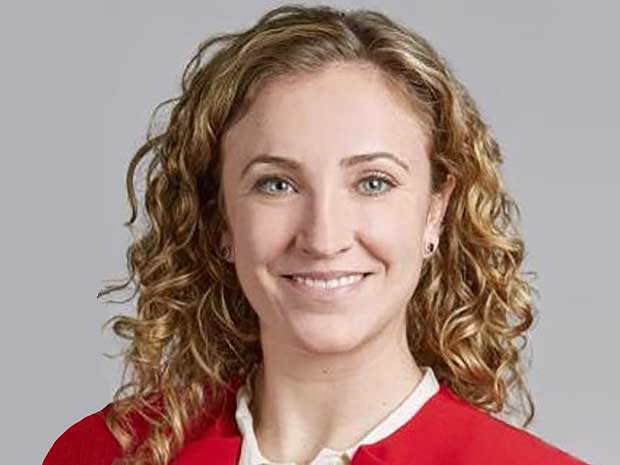Background
The PWA requirements require prevailing wages to be paid to laborers and mechanics in the construction, alteration or repair of a qualified facility (“energy project” hereinafter for purpose of this alert). These requirements are paramount for a taxpayer to claim bonus rates for many IRA clean energy tax incentives. In general, if a taxpayer satisfies the PWA requirements, the incentives may be increased by a multiple of 5.
The prevailing rate is determined by the Department of Labor (DOL) for the locality in which the energy project is located. The PWA requirements also impose apprenticeship rules regarding labor hours, apprentice-to-journey worker ratios and participations by qualified apprentices. Cure payments may be made to avoid penalties. To satisfy the PWA requirements, comprehensive records must be maintained and retained.
The PWA requirements apply to the following tax credits and incentives:
- Investment tax credit (section 48)
- Production tax credit (section 45)
- Advanced energy project credit (section 48C)
- Alternative fuel refueling property credit (section 30C)
- Credit for carbon oxide sequestration (section 45Q)
- Clean fuel production credit (section 45Z)
- Credit for the production of clean hydrogen (section 45V)
- Energy efficient commercial buildings deduction (section 179D)
- Renewable energy production tax credit (section 45Y)
- Renewable energy property investment tax credit (section 48E)
The prevailing wage requirements also apply to the following tax credits:
- New energy efficient home credit (section 45L)
- Zero-emission nuclear power production credit (section 45U)
Depending on the incentive, the PWA requirements may be satisfied for certain energy projects under one of two exceptions. Energy projects that satisfy the requirements are certain small projects under one megawatt (One-Megawatt Exception) and projects where construction begins before Jan. 29, 2023 (BOC Exception).
See RSM US LLP’s prior alerts on the PWA requirements. Rules on prevailing wage and apprenticeship requirements for IRA incentives ; New guidance released on clean energy credit labor requirements.
Scope: When does PWA apply?
The PWA requirements generally apply to the construction, alteration or repair of an energy project. The final regulations generally adopt the proposed regulations. The final regulations do provide additional clarification on the scope of the PWA rules; that is, in what circumstances do the PWA rules apply and when are there exceptions. Of particular note, the final regulations clarify the following issues:
- The apprenticeship requirements only apply with respect to the construction of an energy project.
- Any work performed before Jan. 29, 2023 is exempt from the PWA requirements regardless of whether the taxpayer qualifies for the BOC Exception (PWA Transition Rule).
- Prevailing wages may be required to be paid to laborers and mechanics on secondary sites.
- Prevailing wage does not apply to maintenance work. This includes work that is generally required to keep the energy project in its current condition so that it may be continued to be used.
- Unrelated third-party manufacturers who produce materials, supplies, equipment and prefabricated components for multiple customers or the general public are generally not subject to the PWA requirements.
- Prevailing wages are reset when a contract is amended to substantially expand the scope or extend the contract period, not when an extension is granted to complete “merely incidental work” or to finish an original commitment.
- Prevailing wage requirements do not apply to laborers and mechanics that are employees of the Indian Tribal government.
- Indian Tribal government can choose the applicable wage determination to utilize if Indian land encompasses or overlaps more than one geographic area and a wage determination has been made by the DOL.
Timing: Important considerations
The final regulations made revisions to the time the prevailing wage determinations are made. Under the proposed regulations the prevailing wage determination was proposed to be made at the time construction began and taxpayers were not permitted to make a request for a supplemental prevailing wage or classification determination more than 90 days before the beginning of construction, alteration or repair of the energy project. The final regulations revised this proposed framework providing:
- The prevailing wage determination is now made at the time the contract for the construction is executed by the taxpayer. In the absence of a contract, the prevailing wage determination is established at the time construction starts. A similar framework applies for alterations or repairs once the energy project is placed in service.
- Supplemental wage determinations are to be made 90 days before a contract is executed between the taxpayer and a contractor.
- Any supplemental wage determination must be incorporated into the contract within 180 days of issuance.
- Supplemental wage determinations relate back to the start of the work with a 30-day window to reconcile any underpaid workers.
- A request for prevailing wage rates for additional classifications can be made any time after a contract for the construction, alteration or repair has been executed between the taxpayer and contractor.
- Requests can be made by the taxpayer, contractor or subcontractor.
The final regulations also make key timing revisions to the Good Faith Effort Exception which taxpayers can rely on to satisfy the apprenticeship requirements. With respect to the Good Faith Effort Exception, the final regulations provide:
- Requests must be made to a registered apprenticeship program that geographically operates where the energy project is located and trains the type of qualified apprentices needed for that particular energy project at least 45 days before the qualified apprentice is requested to begin work.
- Later requests to the same program must be made no later than 14 days before work commences.
- Requests are valid for 365 days (366 for leap years), replacing the 120-day requirement under the proposed regulations.
- All requests must be sent electronically or by certified mail.
- If no registered apprenticeship program operates in the area of the energy project, the taxpayer will qualify for the Good Faith Effort Exception, provided the taxpayer contacts the Department of Labor or State apprenticeship agency for assistance in locating qualified apprentices.
- While taxpayers, contractors, and subcontractors generally can create their own registered apprenticeship program, they cannot satisfy the Good Faith Effort Exception by only requesting apprentices from that program.
Practice and Procedure: Recordkeeping requirements and intentional disregard
The final regulations declined to adopt recommendations mandating pre-filing activities required under the Davis-Bacon Act or the requirement to provide certified payroll. Instead, the final regulations incorporate and expand upon the recordkeeping requirements and clarify the list of factors that may be considered by the IRS in determining intentional disregard.
Revisions in the final regulations related to recordkeeping include providing further clarification on the types of documentation taxpayers should maintain to support meeting the PWA requirements. These revisions include maintaining:
- Copies of executed contracts for construction, alteration or repair of the energy project with any contractor or subcontractor;
- Records to document any failures to pay prevailing wages or to satisfy the apprenticeship requirements and the actions taken to prevent, mitigate or remedy the failure; and
- Records related to any complaints received by the taxpayer, contractor or subcontractor that the taxpayer, contractor or subcontractor was paying wages less than the applicable prevailing wage rate or not satisfying the apprenticeship requirements.
For taxpayers claiming the increased credit for meeting the PWA rules, if it is determined that the prevailing wage or apprenticeship rules were not met, the taxpayer must cure the deficiency to preserve the increased credit. In order to cure – in part – a per-worker or per-hour penalty must be paid to the IRS. If it is determined that the failure to comply with the PWA rules was due to intentional disregard, the penalty is increased significantly. The final regulations provide additional factors to consider in establishing whether the increased penalty for intentional disregard applies, including:
- Whether the taxpayer undertook (or engaged an independent third party to aid in conducting) a quarterly, or more frequent, review of wages paid to mechanics and laborers.
- Whether the taxpayer posted in a prominent place the applicable wage rate(s).
- Whether the taxpayer developed and used a plan to utilize qualified apprentices in the construction, alteration or repair of the energy project.
- Whether the taxpayer had in place procedures whereby individuals could report suspected failures to pay prevailing wages, suspected failures to properly classify workers or comply with the apprenticeship requirements.
- Whether the taxpayer investigated complaints of retaliation or adverse action resulting from reports of suspected failures to comply.
Washington National Tax takeaways
The final regulations are robust, incorporating and clarifying many key requirements of the PWA requirements. Taxpayers will need to take the time to understand when the PWA requirements apply. Activities that would have previously been considered “preliminary activities” not subject to the PWA requirements may now trigger the start date of PWA compliance. Taxpayers will need to pay careful attention and properly document timing requirements.
Taxpayers should understand and review the cure and penalty provisions. The final regulations provide welcome relief for taxpayers who are unable to make correction payments due to their inability to locate underpaid laborers and mechanics. Making cure payments at the appropriate time and amount may avoid the IRS holding taxpayers in intentional disregard.
The final regulations do not provide a final rule under sections 48 or 48E. It is expected that Treasury and the IRS may issue final regulations with respect to the PWA requirements for these sections at a later date. Taxpayers may continue to rely on those proposed regulations with respect to construction of a property or project beginning on or after Jan. 29, 2023.
Taxpayers claiming tax credits under a section other than section 45 production tax credit should consider whether there are any specific PWA requirements with respect to that credit included in the final regulations. For those taxpayers expecting to claim a Clean Fuel Production Tax credit under section 45Z, the final regulations modified the proposed regulations by removing the clause requiring construction on or after Jan. 29, 2023. Additionally, for facilities placed in service before Jan. 1, 2025, the final regulations confirm that the construction was subject to the apprenticeship requirements, but not the prevailing wage requirements. Acknowledging the confusion of the language in the proposed regulations, the final regulations provide a transition rule for those who relied on the proposed regulations with respect to the apprenticeship requirements. Specifically, those taxpayers impacted are allow until Sept. 23, 2024, to locate and request qualified apprentices from registered apprenticeship programs for any remaining construction work that occurs after Sept. 23, 2024, and before the facility is placed into service.
The new PWA final regulations are complex and contain many nuances. It is imperative that taxpayers intending to claim or monetize any credit to which the PWA rules apply document compliance with these rules. This includes tracking details about all laborers and apprentices constructing the energy project, whether employed by the taxpayer, their contractor or a subcontractor. This documentation includes wage determinations, actual wages and benefits paid, hours worked and other details about each worker. The final regulations note that these records may be maintained by the taxpayer, its contractor, or a third party that develops the compliance process and/or audits the compliance process. It is ultimately only the taxpayer, though, that is responsible for ensuring this documentation is maintained, as it is the taxpayer who must support its determination that compliance with the PWA rules were met.






